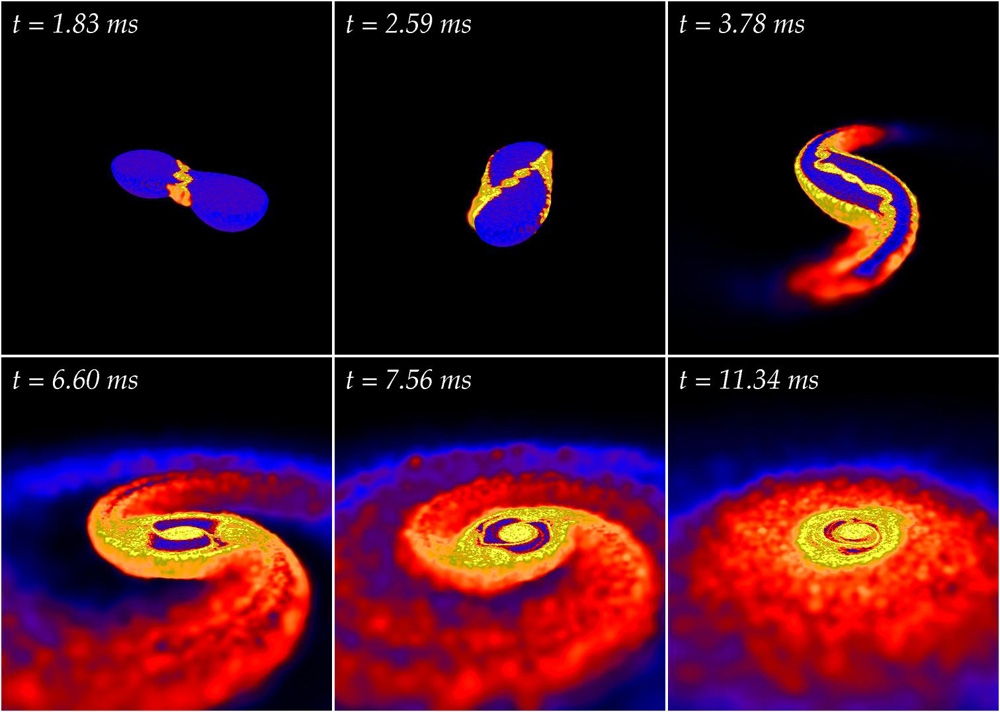University of California, Santa Cruz
The Distribution of Coalescing Compact Binaries in the Local Universe: Prospects for Gravitational-Wave Observations - LZ Kelley et alA pair of neutron stars spiraling toward each other until they merge in a violent explosion should produce detectable gravitational waves. A new study led by an undergraduate at the University of California, Santa Cruz, predicts for the first time where such mergers are likely to occur in the local galactic neighborhood.
According to Enrico Ramirez-Ruiz, associate professor of astronomy and astrophysics at UC Santa Cruz, the results provide valuable information for researchers at gravitational-wave detectors, such as the Laser Interferometry Gravitational-Wave Observatory (LIGO) in Louisiana and Washington. "This is a very important result, as it is likely to significantly alter how gravitational-wave observatories currently operate," Ramirez-Ruiz said.
Luke Zoltan Kelley, a UCSC undergraduate working with Ramirez-Ruiz, is first author of a paper describing the new findings, to be published in the December 10 issue of Astrophysical Journal Letters and currently available online.
A key prediction of Einstein's general theory of relativity, gravitational waves are ripples in the fabric of space-time caused by the motions of massive objects. Scientists have yet to detect gravitational waves directly because they are so weak and decay rapidly, but a planned upgrade for LIGO (called Advanced LIGO) is expected to greatly increase its sensitivity. Compact binaries--which can consist of two neutron stars, two black holes, or one of each--are among the best candidates for emitting gravitational waves that could be detected by LIGO or other current experiments.
Kelley investigated the implications of a key observation about compact binaries: The two objects are not only moving in orbit around each other, they are also typically speeding through space together, their center of mass moving with a velocity that can be well above 200 kilometers per second.
...
This has implications for efforts to observe mergers that emit gravitational waves. Scientists hope to match a detection at a gravitational-wave observatory with telescope observations of the corresponding merger event. The new study suggests that astronomers might not want to look in the nearest galaxies for these "optical counterparts" of gravitational waves.
...
The "kick" that sends compact binaries sailing out of their home galaxies comes from a slight asymmetry in the supernova explosions that give birth to neutron stars and black holes. When a massive star explodes, its core collapses to form either a neutron star (a rapidly rotating ball of densely packed neutrons) or a black hole. According to Kelley, a one-percent asymmetry in the supernova explosion would result in a recoil velocity of about 1,000 kilometers per second (about 2 million miles per hour).
- Astrophysical Journal Letters 725 L91 (10 Dec 2010) DOI: 10.1088/2041-8205/725/1/L91
arXiv.org > astro-ph > arXiv:1011.1256 > 04 Nov 2010
